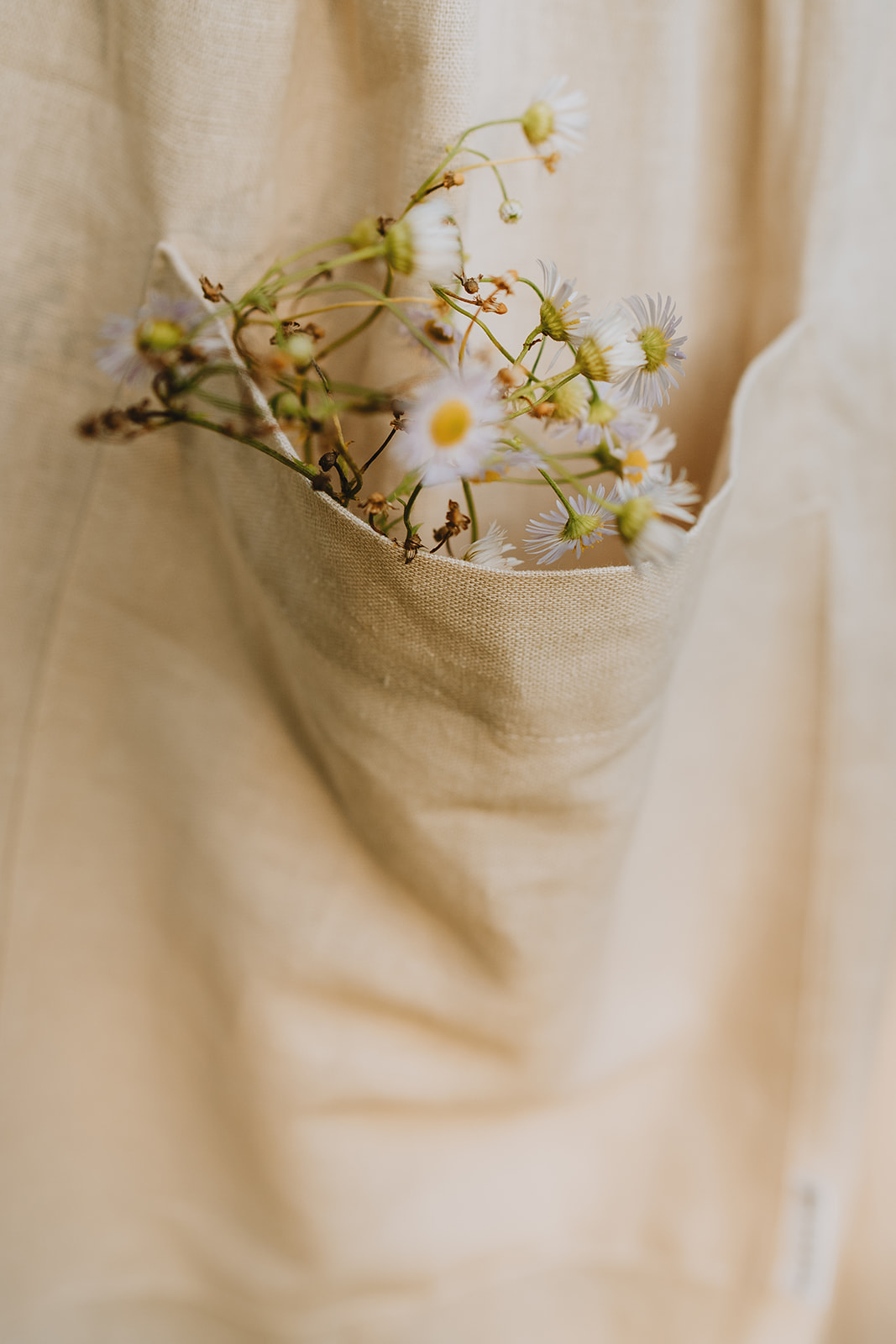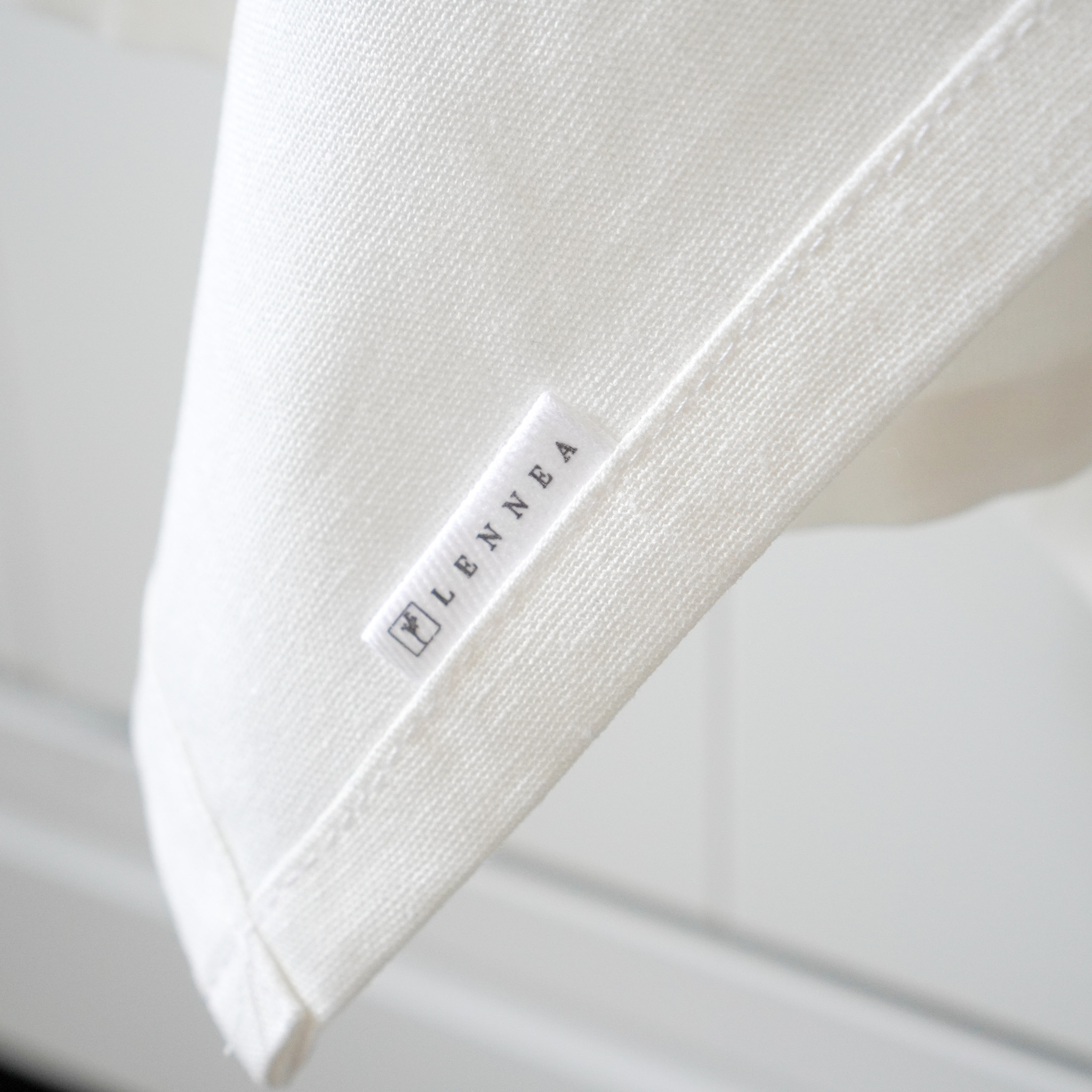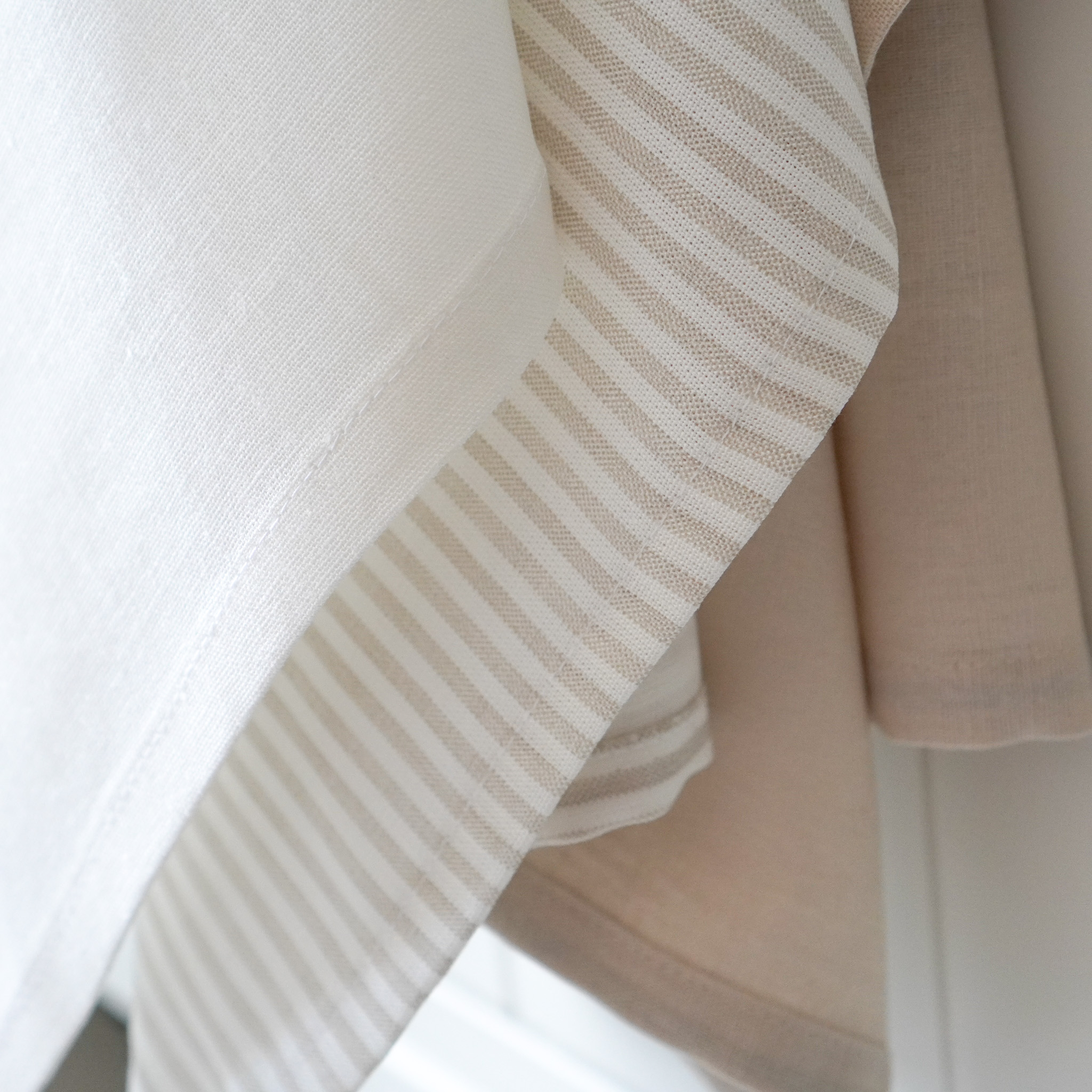How to take care of linen?
Linen is a natural fabric with amazing properties. In winter, it wonderfully envelops you and protects against heat loss, while in summer it does the opposite – it cools you down and quickly wicks away excess moisture. Additionally, it has antibacterial and hypoallergenic properties, which is why it is perfect for children and for people with skin problems. Linen does not irritate and provides the best microclimate for our skin. It makes us feel comfortable and pleasant, and at the same time special.
So how should we take care of linen so it serves us for as long as possible?
It’s not difficult at all. Modernly produced linen is pre-treated, so caring for it at home does not differ much from other fabrics. However, it’s worth paying attention to a few details:
1. Preparation
Place linen textiles in the washing machine so they are not tightly packed. Natural fabrics need space in the drum to move around freely. Otherwise, permanent creases or distortions may form. Remember to wash fabrics in similar colors.
2. Detergents
For washing linen, choose mild detergents, preferably those intended for children. Linen does not tolerate strong detergents and bleaches! They can weaken and discolor the fabric. Do not use fabric softeners. They can coat the linen fibers and cause them to lose their valuable properties, such as water absorption.
3. Choosing the cycle
Linen can be safely washed in the washing machine at 30-40°C. If you decide to wash it by hand, remember that the water cannot be too cold or too hot. Also, use gentle movements: do not scrub or rub the fabric, and do not wring it out. Instead, gently squeeze out the excess water.
4. Spinning
The biggest threat to linen and all natural fibers is strong spinning in washing machines at high speeds. It breaks the fibers, resulting in permanent creases that even the best steam iron cannot smooth out. Therefore, set the spin to a maximum of 400 rpm or skip it entirely and, just like in hand washing, simply gently press out the excess water.
5. Drying
Linen loves natural air flow, so after a gentle spin or pressing out the water, shake out the fabric and restore its original shape. This way, the fabric will gain its natural structure, and ironing will not be necessary. Then hang it on a hanger or drying rack, or lay it flat in a shaded place. Excessive exposure to the sun may discolor linen fabrics, especially in intense colors.
If you are a fan of a tumble dryer, try to avoid it when it comes to linen. A tumble dryer may shorten the lifespan of the fabric, causing permanent creases and significant shrinkage. If it is necessary, set the dryer to the gentlest and shortest cycle. Remove the fabric as soon as the cycle is finished, while it’s still slightly damp. Tumble drying can make linen softer and fluffier, but remember that this type of drying shortens its lifespan.
6. Ironing
Linen actually does not require ironing. Linen enthusiasts love its natural, slightly fluffy texture. However, if you want to achieve an elegant, smooth look of the linen fabric, there’s nothing stopping you. Linen is very resistant to high iron temperatures and steam, so you can iron it without worry, preferably while it’s still slightly damp. You can also use a spray bottle with water.
Once you give linen a try, you won’t want to give it up, and you’ll find that caring for it is easier and much more intuitive than you thought. If you have any doubts about how to take care of linen products, I’m here to help.
I’m happy to answer any questions at hej@lennea.pl



